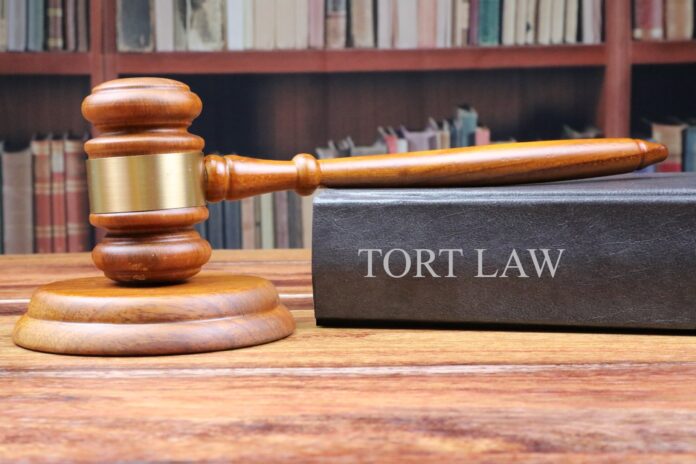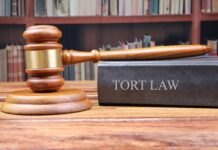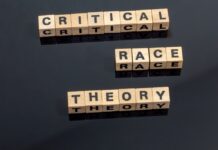This article has been written by Oishika Banerji of Amity Law School, Kolkata. This article discussed the concept of the invasion of animals under tort law with respect to the United States of America.
It has been published by Rachit Garg.
Introduction
The term ‘invasion’ is always perceived as an aggressive entry by enemies into a land that originally did not belong to them. Coerced acquisition of land or an area always has a reason underlying it. When it comes to wild animals, therefore, invasion is ideally understood to be a form of securing their livelihood or habitat solely because they have suffered in the place where they were previously located. Invasion in the language of tort can be understood as ‘trespass’. The application of tort comes into play in relation to domestic animals. This is because they generally have an owner looking after their movements and activities. The reason we are discussing the invasion of animals separately under the law of torts dates back to the dictum delivered by Lord Simonds in Read v. J. Lyons & Co. Ltd. (1947), where he observed that “the law of torts has grown up historically in separate compartments and…. beasts have traveled in a compartment of their own.” This article dedicates itself to making its readers understand the concept of the invasion of animals under the law of torts in the backdrop of the United States of America.
General liability in tort when it comes to animals
When we talk about torts, general principles such as negligence, nuisance, trespass, and damage come into play. Similarly, when discussing torts in terms of animals, such principles will remain functional, with the only variable being a shift in liability from the source of the harm (animals) to that of the controller (owner). Both torts and scienter are intended to address a situation where animals that are known to be dangerous cause harm to an individual. Cattle trespass as a remedy, on the other hand, has been designed for compensating victims for damages that have been caused to the property or the land or to any person by domesticated livestock that has escaped from their owner’s control. A person who has been injured by an animal is not limited to recovering damages only in scienter (explanation in coming paragraphs) or cattle trespass. Other causes of action, such as damages, injunctions, etc., may also be available.
- Negligence: It is obvious to state that an owner of an animal who is responsible for taking care of it may become liable under established principles of tort law. In the case of Gomberg v. Smith (1963), it was held that if a person is bringing a dog onto the highway, he will be liable under the general principles of negligence if reasonable care is not exercised by him in regard to it.
- Nuisance: In the case of O’Gorman v. O’Gorman (1903), it was opined that the owner of animals would be liable for nuisance if the animals unreasonably interfere with the enjoyment of the property of the owner’s neighbor. When it comes to adjoining property as well, unreasonable interference with the same by the animals will also hold its owner liable, as was the scenario in William Aldred’s Case (1616).
- Trespass: When it comes to trespass, the owner will again be liable if he contributes to the activities of his animals thereby prejudicing the rights of others. For example, if an owner commands his pet dog to attack the person walking on the adjacent road or the owner knowing it to cause damage to his neighbor, drives his animals onto the neighbor’s property, the same will amount to trespass by the owner [Cronin v. Connor (1913)].
- Occupier’s liability: In the case of Kavanagh v. Stokes (1943), it was held that an occupier of a premise will be held liable if the occupier’s animal prevents the lawful entry of any individual into the occupier’s premises. The principle that was laid down in the case of Rylands v. Fletcher (1868) draws attention to our discussed context, as it stated that animals collected on the property, exhibiting non-natural use of the same if it causes damage by means of an escape, the owner will be liable for all such injuries that resulted from the escape.
The above-mentioned cases are all representations of circumstances where the liability for the injuries caused by a person’s animal is collectively placed under the general principles of tort. In all these cases, the source of the harm caused, being an animal, is irrelevant, thus resting the burden of proving the act to not be a tort on the owners of such animals. Whether it is controlling a dog on the highway in a negligent manner, a stench constituting a nuisance, or causing noise by means of barking dogs, such acts will not be determined on the basis of the fact that the source is an animal. Instead, what is important to consider in all such acts is the conduct of the defendant, who is the owner of such animals. It is noteworthy to mention that the defendant in these cases is also devoid of the defense that the plaintiff’s claims are onerous.
All about cattle trespass
As has been explained previously, trespassing signifies the unlawful entry of a person or animal into the property of another, thereby causing prejudice to the enjoyment of such land by its owner. Cattle trespass signifies the entrance of cattle owned by a person to another’s property for the purpose of straying, resulting in damages to such land. Considered to be an ancient common law tort, cattle trespass results in the keeper of livestock being strictly liable for any resultant damage caused by the livestock while straying in the land of another.
What comprises the term ‘cattle’
While the internet says that ‘cattle’ means domesticated animals raised for their byproducts such as meat, milk, or hides or for draft purposes, it generally refers to cows, buffalo, and bison. Chapter 16.04 of the Revised Code of Washington (RCW) that is talking about “Trespass of Animals-General’ states that, “any person who has had suffered from damages caused by any horses, mules, donkeys, cattle, goats, sheep, swine, or any such animals, by means of they trespassing upon any land which is otherwise enclosed by the lawful fence as provided in Chapter 16.60 RCW or causes trespass while running at large in disobedience of Chapter 16.24 RCW, can keep such animals in custody until the original owner mandatorily pays such prescribed damages, or until sufficient security be given in regards to the same.”
Provision RCW 16.04.020 is necessary to be mentioned here for it balances avoidance of prejudice for both the owner and the aggrieved party. Whenever any animals are restrained in accordance with RCW 16.04.010, the person who is involved in such prohibition is required mandatorily to notify the owner (the person in whose possession the animal was during the commission of trespass) in writing, within a period of twenty-four hours. The writing should also consist of the probable amount of damages that the owner has incurred due to the act of trespass. This provision comes with a proviso that states that the applicability of the provision is restricted to the fact that the aggrieved person has knowledge about the owner of such animals.
Further, if the owner of the animals is unknown to the aggrieved party (RCW 16.04.025), then in such case the latter shall notify the number, description, and location of the animals, to the county sheriff or the nearest state brand inspector, within twenty-four hours. Following this, it is the responsibility of the sheriff or inspector to ascertain the ownership of the animal. If they locate that the animal has been demarcated with a brand or a tattoo that is instead registered with the director of agriculture, then the latter is responsible for notifying the owner of the animal as per RCW 16.04.020.
Damages incurred by the owner of the cattle when the latter inflicts harm
The aspect of damages and liabilities owing to cattle trespass is simplified under RCW as it provides that whenever any animals trespass, as previously discussed under RCW 16.04.010, the owner having possession of the such animal shall be held liable for all such damages the owner may sustain as a consequence of such a trespass (RCW 16.04.015).
Under RCW 16.04.025, if the county sheriff or the brand inspector reaches the conclusion that no apparent damage has been caused to the property of the retainer of the animals, then such animals have to be removed as per Chapter 16.24 RCW. It is to be noted that such removal will not attract a civil suit filed by the owner on the grounds that his rights in relation to the property have been prejudiced and, therefore, he has room for recovering damages associated with it.
Scope of action for failure to pay damages
RCW 16.04.030 provides that if the owner of the animals who have been charged with the liability of paying damages fails to do so or refuses to do so, within ten days from the date of serving notice to him, the aggrieved party can initiate a civil suit in the court of law having jurisdiction against the such owner.
If the plaintiff (aggrieved party) is unaware of the defendant (owner of the animals), a John Doe injunction (a type of pre-infringement injunction, issued to a person whose identity is still unknown) can be initiated against the defendant. The proceedings in such cases will be the same as in a civil proceeding (except as modified in RCW 16.04.010 through 16.04.070). District judges will have exclusive jurisdiction for all actions and proceedings under RCW 16.04.010 through 16.04.070, if and when the claimed damages do not exceed one hundred dollars (RCW 16.04.040).
It is also to be noted that if the suit has been initiated in a superior court, the defendant is supposed to appear before the court upon being served with a summons within a period of five days from the date of the summons.
The possible defenses that the defendant has in cattle trespass cases
The defenses that the owner of the animals (defendant) can exercise when his cattle is guilty of trespassing in someone else’s land for straying purposes leaving damages behind, namely:
- When costs may be charged to the plaintiff (RCW 16.04.060): The burden of proving the number of damages sustained by the plaintiff because of the defendant’s animals rests on the plaintiff himself. If the trial court is of the opinion that the defendant’s possession has not incurred any harm and if the defendant can show that a tender was made and paid into court belonging to an amount equal to the damage and costs, he cannot be held liable any further.
- Trespass via fence damaged by wildlife (RCW 16.04.100): If the defendant can prove that the damage has been caused by wildlife to a lawful fence which was also in a stock restricted area and the owner did not have a reasonable opportunity as per a prudent man to repair the fence, neither he nor the State will be liable for paying the damages incurred.
- Voluntary assumption of risk: Voluntary assumption of risk can also be termed to be caused by the default of the plaintiff. Based on the Latin maxim, “volenti non fit injuria”, voluntary assumption of risk restricts the plaintiff from claiming damages for the harm that was known to him as could have occurred. Although categorized as a defense, the application of the same is limited in the context of cattle trespass.
- Inevitable accident: The defense of an inevitable accident can be adopted by the defendant if he can show that he had taken all reasonable care for preventing trespassing of his cattle into the stranger’s land. This defense was in play in the case of Sutcliffe v. Holmes (1947) where it was held that although this defense functions in the same line as negligence (whether the defendant had taken reasonable care to prevent the harm to a reasonably foreseeable aggrieved part), the onus to prove lack of negligence rests on the defendant himself.
All you need to know about the scienter action
The scienter action is a doctrine under the law of torts that states that the person taking care of dangerous animals (keepers), is strictly liable for any injuries or harm inflicted by such animals. While the word ‘scienter’ signifies ‘knowledge’, it is the plaintiff (the aggrieved party) who is to prove that not only the impugned animal was dangerous, but also that the same knowledge was already possessed by the defendant (owner/keeper) himself. The applicability of this doctrine is based on two categories of animals, namely:
- Animals ferae naturae: Those animals which are dangerous by their very nature, for eg., tigers, wild elephants, lions, and jackals. In this case, the owner or the keeper of such animals is presumed to be aware that the animals are dangerous. In this case, keepers are said to be strictly liable for the harm caused by the animals.
- Animals mansuetae naturae: These animals are by nature considered harmless, for eg., cats and dogs. Although these animals generally do not appear dangerous, it will be wrong to state that they can never cause any harm. In this case, the keeper will be strictly liable if he had knowledge about the dangerous nature of the animal prior to it harming the plaintiff.
A demonstration of the level of danger possessed by animals as discussed under animals mansuetae naturae must be in close proximity to the damage caused in the issue for scienter to apply. It was in Canada, where the rule was laid down by Conant, D.C.J., in Morsillo v. Migliano (1985), where he declared that the plaintiff was required to prove “that the alleged animal had previously committed, or attempted to commit such an act that showcased a similar level of viciousness that was presently complained of”.
As has been held in the case of Drake v. Dean (1993), as every other American state, California has successfully been able to maintain the common law cause of action on the basis of ‘scienter’ or knowledge of the dangerousness of domestic animals.
Let’s take the example of a dog in this regard. It was noticed that a dog who had chased a goat, showcasing a vociferous behavior, had not showcased similar behavior when it had bitten a person [as was seen in the case of Osborne v. Chocqueel (1896)]. Again in the case of Sgro v. Verbeek (1980), it was seen that the dog, which used to rush towards strangers, barking at them whenever any of them tried to enter the premises it was in, did not display similar behavior while it had bitten a child who was trying to take care of it.
Damages under the doctrine of scienter action
In the case of scienter, like cattle trespass, liability is imposed on the defendant (owner/keeper of the animals), who will therefore be held liable for any harm caused by the animals under his control. For avoiding hurdles in the road of determining appropriate damages that the defendant will be liable for, courts in cases of scienter action appear to have been indecisive between two tests, namely, directness and foreseeability. Directness makes room for the defendant to be liable for all damages directly related to the incident involving damages caused to the plaintiff. When it comes to foreseeability, the defendant will only be liable for those damages that can be reasonably foreseeable to have resulted from the act of the animal.
In the case of Behrens v. Bertram Mills Circus Ltd. (1957), it was observed that there is a need for drawing a distinction between damages caused by animals ferae naturae and those caused by mansuetae naturae. This is because while the former keepers have to mandatorily pay all such damages caused by animals whenever they are out of control, the owners of the latter are only liable to pay damages that result from the dangerous propensities of the animals.
Defenses available to the animal keeper under the doctrine of scienter action
The animal keeper, or defendant, has defenses that have been established by various courts of law in several notable judgments, as have been provided hereunder:
- The harm caused to the plaintiff was by a caged animal (Can also be referred to as default of the plaintiff or contributory negligence):
One of the primary defenses in the application of scienter action is that the harm suffered by the plaintiff was brought upon him by himself, with no involvement of the defendant’s animal in the same. This enables the defendant to show that the harm caused to the plaintiff was not the consequence of carelessness or negligence on the part of the defendant. In the case of Maynes v. Galicz (1975), the scienter action was not applied because the harm caused to the plaintiff’s child was caused by a caged wolf. The child was bitten by the wolf in his hand because the child had gone too close to the cage of the wolf. It is interesting to note that an extreme form of plaintiff’s default can also be termed as ex turpi causa non oritur actio (out of a base illegal or immoral consideration, an action does not arise).
- Animal that caused injury was under the control of the defendant:
The Court of Appeal in the case of McQuaker v. Goddard (1940) had observed that the burden of proof that the animal who caused the injury had escaped the control of the defendant keeper lay on the plaintiff. The defendant, by stating that the alleged animal was under its control when the injury was caused, can show that reasonable care in respect of the animal was taken by its keeper.
The statutory liability for dogs
Several states in the United States have begun to impose strict liability for dog attacks, which ipso facto makes the dog’s owner legally liable to a victim who was bitten by the dog. Dog bite statutes in the United States that impose strict liability date back to the 1700’s. Before talking about the dog bite statute in detail, it is necessary to understand what it refers to. Like any other statute with its own purpose, dog bite statutes provide remedies for a dog bite or any kind of harm caused by a dog, which may or may not be in the form of a bite or harm caused by a domestic animal. Dog bite statutes owe their roots to state statutes, city ordinances, case law, country ordinances, and authoritative texts such as the Restatement of Torts. This is the sole reason why the term ‘dog bite statute’ must be inclusive of state, city, and county laws. It is interesting to note that dog bite statutes primarily differ in terms of their scope and jurisdiction. While it can apply to both bite and non-bite injuries, the statute can include in its ambit, non-owners who have either custody or control over the dog and/or injuries that are suffered to the property by animals whose owners are third parties.
As per the case of Priebe v. Nelson (2006), the two key elements of a scienter claim in relation to statutory liability to dogs are prior wild behavior and knowledge concerning the same on the defendant’s part. It was further opined that cause of action on holding the defendant to be strictly liable under common law can be maintained if only the owner of a domestic animal that is involved in biting and injuring others has the knowledge about such behavior of the animal. If the defendant, although aware of the dog’s behavior decides to keep the plaintiff in abeyance, then it can be said that the former purposefully led the plaintiff to suffer the risk and thus will be strictly liable for the same.
According to a Triple-I analysis of dog bite laws compiled by the American Property Casualty Insurers Association as of March 2021, about 29 states have created liability for dog owners for any harmful act by the same. Further, in about 17 states, including the District of Columbia, although liability does not automatically arise, acts are categorized as misdemeanors or, in extreme cases, felonies, along with fines. Arkansas, Kansas, Mississippi, and North Dakota still don’t have dog bite statutes.
Dog bite statutes have no uniformity, for they vary from one state to the other in both statutory language and application. The imposition of absolute liability by means of dog bite statutes has been recognized by Minnesota courts. Scenarios in Pennsylvania and Colorado state that dog bite statutes are only applicable in cases involving grave injuries. Strict liability for financial losses (medical bills (New York covers only this) and loss of income) only in cases of dog bites has been recognized in Colorado and Oregon. The scope for the same with regards to suffering, pain, and non-pecuniary damages is absent. While in Maine and Tennessee, the statute is applicable for bites that occur outside the owner’s property, the application of the statute remains limited to bites happening on the keeper’s property in case of Alabama.
Nature of liability for dog owners in the United States of America
The legal scenario in the United States of America in deciding when to hold dog owners liable in cases where they have no intention involved in the harm caused by their dogs remains ambiguous. Liability, therefore, ranges from absolute (in cases where the owner’s fault can be shown) to strict (the owner is held liable for all the injuries that resulted because of his dog’s action, as they were foreseeable by the owner). It is ideal to note the 1993 Oklahoma case, in which the court of law affirmed the applicability of strict liability owing to the negligence of the keeper of the dog, for he left it with a commercial kennel, resulting in the aggrieved party being bitten by it.
The states that impose strict liability on dog owners, irrespective of whether they had knowledge of their dogs’ behavior, are Alabama, Arizona, California, Colorado, Connecticut, Delaware, D.C., Florida, Georgia, Hawaii, Illinois, Indiana, Iowa, Kentucky, Louisiana, Maine, Massachusetts, Michigan, Minnesota, Montana, Nebraska, New Hampshire, New Jersey, New York, Ohio, Oklahoma, Pennsylvania, Rhode Island, South Carolina, Tennessee, Utah, Washington, West Virginia, and Wisconsin.
When it comes to the nature of liability for dog owners in the United States of America, generally, three kinds of legislation impose liability, namely:
- A dog-bite statute: This statute is applicable when dog owners are automatically held liable for any kind of injury that has resulted because of their dogs without provocation.
- The one-bite rule: Application of the same takes place when the dog owner was aware of the injury that his dog can cause to any individual. The burden of proof as to the knowledge of the dog owner rests on the aggrieved party (plaintiff).
- Negligence laws: The application of negligence laws is sole because of lack of reasonable care taken by the dog keeper towards his dog resulting in the damage caused to the aggrieved party.
To conclude, in order to understand whether legal liability will be attached to a particular action by dogs, the following steps need to be attained:
- Was the action brought against the dog, a consequence of dangerous activity threatening the general?
- Had the alleged dog showcased a similar kind of behavior previously as well?
- Did the defendant (dog owner/keeper) have knowledge about the propensity of his animal?
- Did the dog’s dangerous conduct cause harm to the plaintiff concerned?
Damages awarded in case of dog bites/attacks in the United States of America
It is ideal to note that in the case of DeRobertis v. Randazzo (1983), where the plaintiff’s child was attacked on the head by a chained-up dog belonging to the defendant, resulting in the child having nightmares regarding the same, a sum of $40,000 was awarded to the plaintiff by the jury. The same was upheld by the Appellate Division as well. Further, when the matter went up before the state Supreme Court, the defendant also had to pledge his house as security to the plaintiff with regards to the judgment delivered. What can be understood from this is that damages in cases of dog attacks can cost the keeper heavily.
Defenses for the dog owner in cases of statutory liability
Claims that generally arise in tort cases make room for being denied by a court of law on the grounds that the conduct of the aggrieved party is by itself negligent. If negligence or carelessness on the part of the injured party or the damage caused was initiated by the aggrieved individual himself can be proved, the burden of liability can be removed from the defendant. Although defenses for torts differ from one state to the other, generally the common terms within this ambit are contributory negligence, comparative negligence, assumption of risk, and wilful provocation.
It is important to talk about a Montana case that illustrates both the issues of provocation and contributory negligence. In this case, the plaintiff was attacked by the defendant’s dog because of the former’s carelessness. The plaintiff, while talking, had leaned over the defendant’s fence, because of which the latter’s dog jumped towards the fence and bit the plaintiff. While Montana had a strict liability statute when it came to dog bite cases, the defense of contributory negligence and provocation resorted to by the defendant was rejected. This was because, under strict liability statute, the defense of contributory negligence does not have much of a hold. But, the Court had also stated that if the plaintiff had knowingly, unreasonably subjected himself to the risk possessed by wild animals or an abnormally dangerous domestic animal, a defense of contributory negligence cannot be denied.
The defense of the assumption of risk is also said to be available as a defense in some states in dog bite cases. If the aggrieved party is viewed as being involved in working with animals, then any kind of risk that is associated with the same (such as dog bites) will be invoking the defense of the assumption of risk, without any second thought to the same.
Conclusion
As we come to the conclusion of this article, it is ideal to state that tort law revolving around the invasion of animals is generally similar to the one surrounding humans. The liability arising from any kind of harm caused or resultant damages vests completely on the owner of the animal. This relationship between the animal and its owner is, to some extent, similar to that of employer-employee with the only difference being that in the latter case both can be held responsible for the negligent act, while in the former it is limited to the owner only.
References
- Maynes v. Galicz (1975), 62 D.L.R. (3d) 385 (B.C.S.C.).
- Sutcliffe v. Holmes, [1947] 1 K.B. 147 (C.A.).
- Osborne v. Chocqueel, [1896] 2 Q.B. 109.
- Sgro v. Verbeek (1980), 111 D.L.R. (3d) 479 (Ont. H.C.).
- https://www.canlii.org/en/commentary/doc/1992CanLIIDocs99#!fragment/zoupio-_Toc3Page14/BQCwhgziBcwMYgK4DsDWszIQewE4BUBTADwBdoAvbRABwEtsBaAfX2zgGYAFMAc0ICMAFgCUAGmTZShCAEVEhXAE9oAclViIhMLgTzFK9Zu26QAZTykAQioBKAUQAy9gGoBBAHIBhe2NJgAI2hSdhERIA
- https://ca.vlex.com/vid/the-scienter-action-liability-684081785
- https://www.iii.org/article/liability-and-safety-tips-for-dog-owners
Students of Lawsikho courses regularly produce writing assignments and work on practical exercises as a part of their coursework and develop themselves in real-life practical skills.
LawSikho has created a telegram group for exchanging legal knowledge, referrals, and various opportunities. You can click on this link and join:
Follow us on Instagram and subscribe to our YouTube channel for more amazing legal content.






